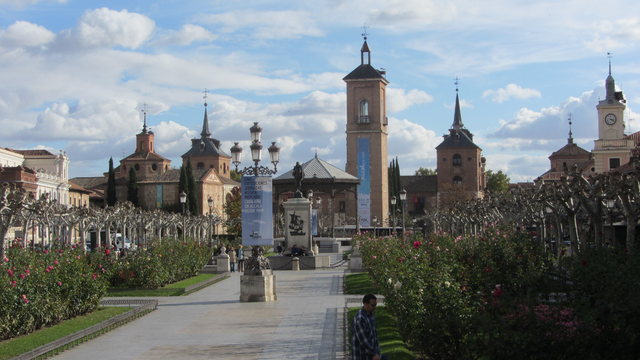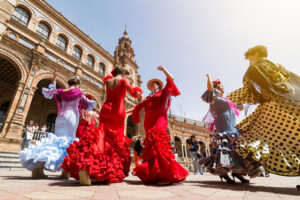Discover 10 world-class places to visit in Spain after the top Spanish sites. With 44 properties on the World Heritage List, Spain has the third-highest number of UNESCO sites in the world. Wherever you decide to live in the country you will always have a historic site nearby. If you’ve already seen the classics in Granada, Barcelona, and Sevilla, now it’s time to explore the less-visited places.
From an iron bridge to a royal monastery, here’s a selection of the best UNESCO World Heritage Sites in Spain:
- Archaeological ensemble of Mérida
- Mudejar architecture of Aragon
- Palmeral of Elche
- Heritage and mercury, Almadén
- Royal monastery of Santa María de Guadalupe
- Las Médulas
- Renaissance monumental ensembles of Úbeda and Baeza
- Vizcaya Bridge
- Old town of Ávila with its extra-muros churches
- University and historic precinct of Alcalá de Henares
Archaeological ensemble of Mérida
A UNESCO site since 1993
Where: Province of Badajoz, Autonomous Community of Extremadura
The current capital of Extremadura, Mérida, is a splendid open-air display of well-preserved Roman architecture. Allow yourself at least two days in the city and buy a general ticket (€12 per adult). This gives you access to six local monuments, including a theatre, an amphitheatre, a circus and the Morerías archeological site. A walk around the city takes you to several aqueducts, the Roman bridge over River Guadiana, and the Templo de Diana, a Roman temple where a wealthy man built himself a 16th-century palace. Mérida, founded as Emérita Augusta, was built along Vía de la Plata, a commercial route crossing western Spain. A section of the path is visible from the patio of the National Roman Art Museum.
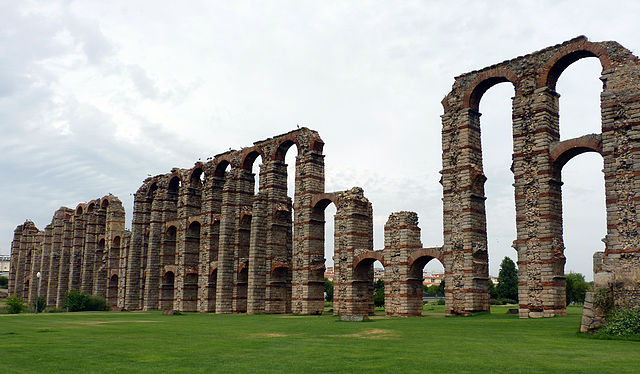
Mudejar architecture of Aragon
A UNESCO site since 1986
Where: Provinces of Teruel and Zaragoza, Autonomous Community of Aragon
Aragon is one of the most overlooked Spanish regions by foreigners. The Mudejar art is unique to Spain due to its particular historical context after the Reconquista in the 12th century, where Christians and Moors cohabited for centuries. It is a refined mix of European art and Islamic tradition with influences from the Jewish culture; its main characteristic is a new and creative use of brick and glazed tiles in belfries. Ten religious and secular monuments comprise this UNESCO World Heritage Site, which includes the church tower and church of San Pedro de Teruel, the Mudejar features of the Aljafería Palace of Zaragoza, and the parish church of San Pablo de Zaragoza.

Palmeral of Elche
A UNESCO site since 2000
Where: Province of Alicante, Autonomous Community of Valencia
Imagine being able to recreate a typical landscape of your home country in a different one; can you picture the Cotswolds in Andalusia? That is what happened in Elche in the eighth century during the Moorish occupation of much of the country when the palmeral (palm grove) was created. It’s a great example of North African agriculture in Europe, an oasis of trees and Europe’s only palm grove. Some of the original date palm trees remain today, as does the irrigation system, which is still in use.
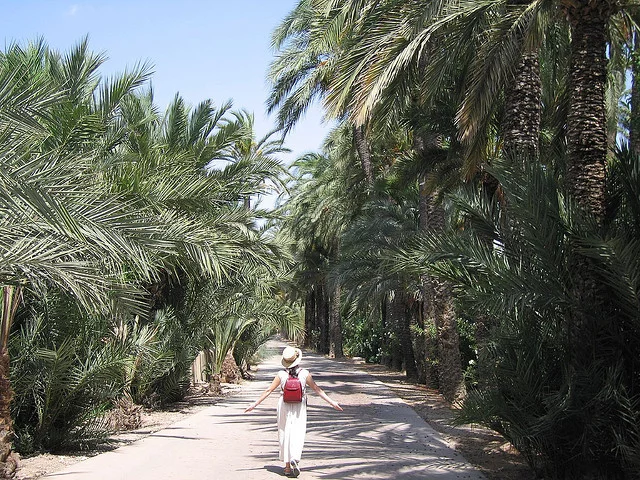
Heritage and mercury, Almadén
A UNESCO site since 2012
Where: Province of Ciudad Real, Autonomous Community of Castilla La Mancha
The mining sites of Almadén and Idrija (Slovenia) form a single UNESCO site. They were, until recently, the largest mercury mines in the world. The site in Almadén dates from the 16th century, when a significant mercury production went to the Spanish America. Today, a tour takes you 50m underground to several exploitation areas, a winch, and a gallery where forced laborers worked from the local prison. Other buildings belonging to this UNESCO site are the Retamar Castle and San Rafael Royal Miners Hospital, which currently holds the historical archives of the mining site.
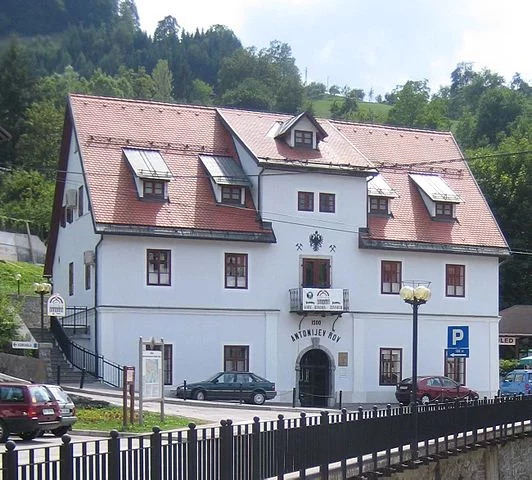
Royal monastery of Santa María de Guadalupe
A Unesco site since 1993
Where: Province of Caceres, Autonomous Community of Extremadura
The history of Guadalupe is inevitably related to its sanctuary. The legend has it that, in the 12th century, a local shepherd found a statue of Virgin Guadalupe near the river and they build a chapel in her honour. The town became (and remains) an important centre of pilgrimage. Over the following centuries important works were carried out to turn the chapel into what it is today – an impressive monastery with elements of Gothic, Mudejar, Renaissance, Baroque and Neoclassical styles. Visit its Gothic Church, its two beautiful cloisters and the Camarín de la Virgen, a richly ornamented octagonal building where you can see paintings of Italian artist Luca Giordano.
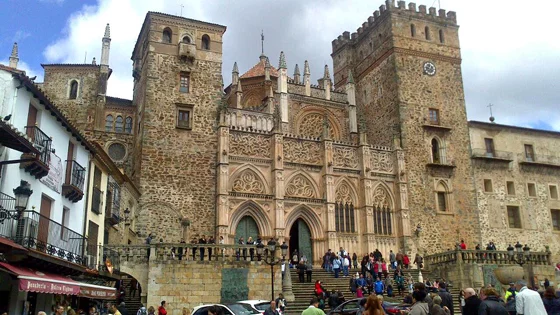
Las Médulas
A Unesco site since 1997
Where: Province of Léon, Autonomous Community of Castile-Leon
The northwest was one of the last areas in Spain to be conquered by the Romans; and yet, they didn’t waste much time to make the most of it. They exploited Las Médulas’ rich gold deposits using hydraulic power and ceased their activity after two centuries, leaving a devastated area behind. The lack of subsequent industrial activity has allowed Las Médulas to remain today in good condition. The terracotta colour of the headlands contrasts with the green of the surrounding hills and mountains, creating a striking and dramatic landscape that avid photographers and walkers will love.

Renaissance monumental ensembles of Úbeda and Baeza
A Unesco site since 2003
Where: Province of Jaen, Autonomous Community of Andalusia
These two Andalusian cities have many things in common. Although both have ancient origins and display a range of buildings from different eras, it is their Renaissance Monumental Ensembles that made them be included in the Unesco World Heritage sites list. From the 16th century Úbeda preserves a number of buildings, the most important being the Palace of Francisco de los Cobos, la Cárcel del Obispo (Bishop’s Prison, which is now a law court) and the Palace of the Dean Ortega. Baeza’s most iconic Renaissance buildings are the cathedral, the fountain of Santa María, the former Seminary of St Philip Neri and the University building. Úbeda and Baeza are barely 10km from each other, so make sure you include both in your visit.

Vizcaya Bridge
A Unesco site since 2006
Where: Province of Bizkaia, Autonomous Community of Basque Country
This bridge is regarded as an exemplary construction of the Industrial Revolution. Built in 1893, it combines iron work from the 19th century and an innovative (at the time) technology of twisted steel ropes. The result was so outstanding it served as a model to build other bridges in different parts of the world. Fact: it was the first bridge to carry both traffic and people on a suspended gondola and is still in use, so go and cross it!
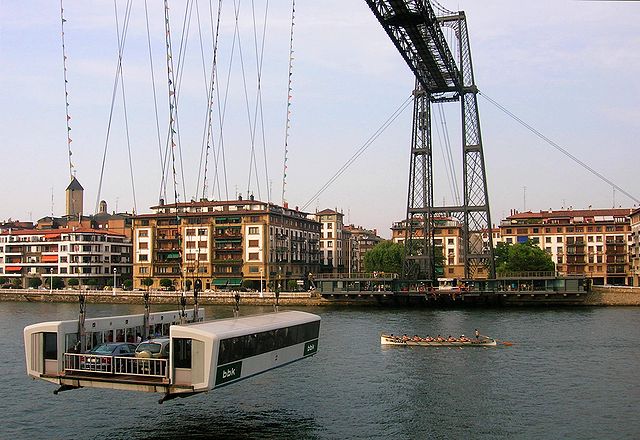
Old town of Ávila with its extra-muros churches
A Unesco site since 1985
Where: Province of Avila, Autonomous Community of Castile-Leon
Ávila is one of the most charming small Spanish cities. Located only 90 minutes by car from Madrid, it was founded in the 11th century as a walled defensive city against the Moors. Its fortifications are one of the best preserved and most completed in Spain, with their nine gates and over 80 semicircular towers. Walking around Ávila, the birthplace of Saint Teresa, is like traveling back to the Middle Ages. Its city center concentrates many historic religious and secular buildings (cathedrals, convents, palaces, churches). Make sure to include the cathedral and San Vicente basilica (outside the walls) and the church and convent of Saint Teresa in your visit.
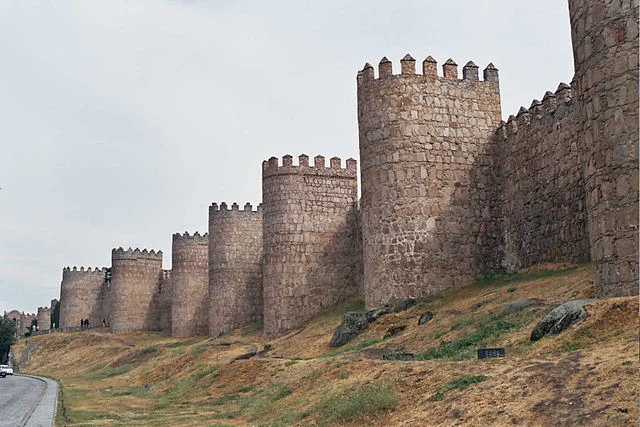
University and historic precinct of Alcalá de Henares
A Unesco site since 1998
Where: Province and Autonomous Community of Madrid
Located just 35 minutes by car from Madrid’s city centre, Alcalá was the first planned university city in the world. Built in the 16th century taking over a semi-abandoned medieval town, its sole purpose was to become a model for other universities. The city is closely related to literature and humanism and was the birthplace of Miguel de Cervantes, author of Don Quixote and the most celebrated figure in Spanish literature. The University Precinct includes a number of significant buildings you should not miss, such as the Iglesia Magistral (cathedral), the Archbishop’s Palace and San Ildefonso chapel.
